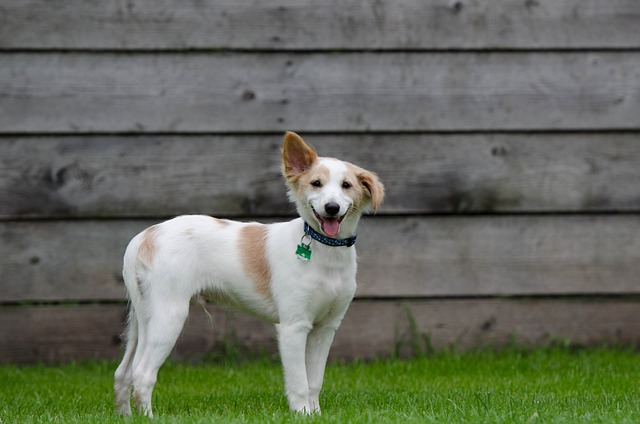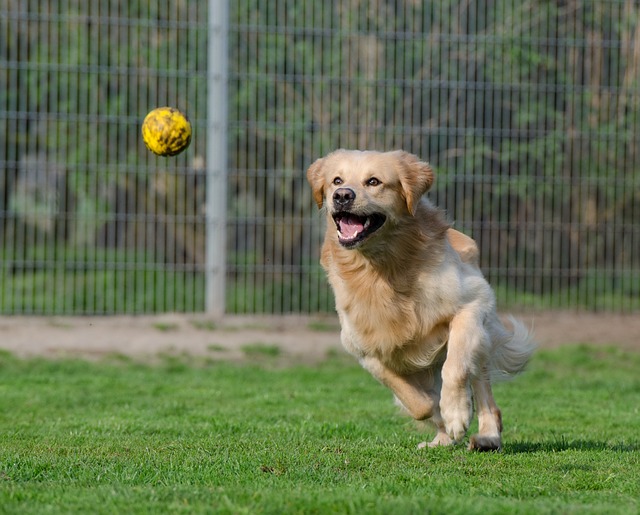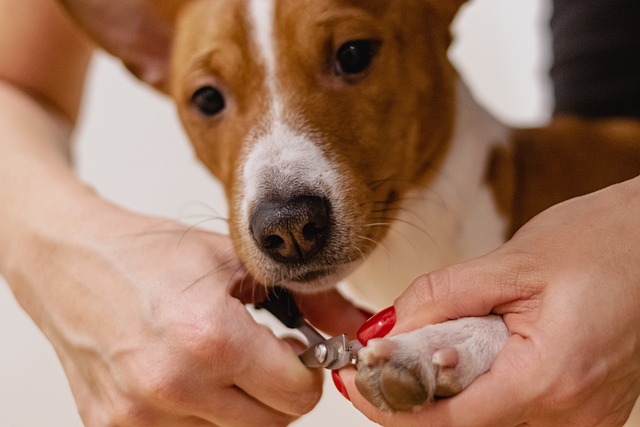
What is Dog Boarding? How to Evaluate a Boarding Kennel?
Dog boarding is a service offered by some veterinarians and pet boarding kennels, allowing owners to drop their dogs off for a set amount of time in exchange for a fee. The kennel staff is in charge of providing the dogs with food, exercise, and other care while they are boarded. It’s important to know the right questions to ask and the right things to look for when finding the right “home-away-from-home” boarding experience for your dog.
It’s crucial to find a setting that is cozy for both you and your dog when you’re looking for a place to board it. Leaving your dog in the care of others these days offers more options than ever before.
I will show you how to find the perfect boarding, please read on.
Table of Contents
Boarding Kennels
At accredited boarding kennels, more than 30 million people board their pets annually. On the other hand, you must thoroughly inspect a kennel before selecting it. Check online and personal references, as well as references from people you know who may have boarded a pet there.
By using a reputable boarding kennel, you can rest easy knowing that your dog is receiving responsible care while you’re away and that your pet will remain happy and safe. Pet sitting services are an alternative to boarding kennels. You can select either, depending on your needs, provided the pet sitter is qualified to look after your animals.
Boarding Kennel Services
A boarding kennel might just offer a secure place for your pet to stay while you are away, or it might also offer additional services like training sessions, pet shipping, grooming, and the sale of pet supplies. Horses, exotic pets, birds, reptiles, and other animals may also be boarded at some kennels. Depending on the services provided, prices may change.
How to Evaluate a Boarding Kennel
Once you’ve checked references for a boarding kennel, you’ll need to take several additional steps to make sure the kennel is one you can trust with your pets, including:
Call the kennel.
- Check to see if the kennel has availability for the dates you require.
- Find out about prerequisites, such as shots.
- Inquire if you or they are providing the food.
- Ask the kennel if they will feed the food you bring if your pet is on a special diet.
- If you feed raw, make sure the kennel will feed the raw food you bring; some won’t.
- If your pet needs to take medication, find out if the kennel will administer it at the appropriate times. Some don’t, and occasionally there won’t be anyone at the kennel when you need to administer medication.
- A breed acceptance check should be performed at the kennel.
Set up a time in advance to visit the kennel.
- Examine the cleanliness.
- Take a look at how the staff treats the animals.
- When guests enter the kennel and when each pet departs, make sure the staff follows the correct cleaning procedures.
- Verify that the facilities are acceptable to you. The dogs may spend all of their time indoors or outdoors depending on the kennel. Do all of the kennels have runs? If not, how often does your dog get to use the run?
Especially if your dog is a well-known Houdini, make sure each individual kennel is secure.
- Verify that the fencing is in good shape and that each pen or kennel is sturdy.
- Inform the kennel if your dog is a climber or a digger and inquire about the measures they will take to prevent escape.
- Verify that cats are housed in covered kennels.
Make sure your pet is safe in the kennel. Everything out of reach, including chemicals and sharp objects that could hurt your pet. Check to see if the kennel uses wood chips or rocks in the bottom of the pens if your pet has a history of consuming them.
- Make sure the kennels are separated by sturdy barriers.
- Dividers should be included in exercise pens.
- Achieve good traction on all surfaces when they are wet.
- Ensure that the kennel has readily available firefighting supplies.
- All animals should be checked frequently throughout the day and the kennel should be well-monitored. The person performing the inspection ought to be knowledgeable about how to recognize symptoms of illness or distress in animals. Lethargy, bloody stools, coughing, eating less than usual or not at all are examples of symptoms. Additionally, be aware of how much water and waste your pet consumes each day, and let the boarding kennel know so that they can provide enough water for your pet.
Make sure the staff maintains water buckets that are clean and filled, the feeding procedures, and whether veterinary services are available close by the kennel, among other things, to look into. Verify the kennel’s vet care policy before bringing your pet there. A vet visit for your dog may be recommended by some, which could cost you thousands of dollars that you might not have. Provide the boarding kennel with your pet’s insurance information if you have it.

In-Home Dog Boarding
A small, enclosed space might not be the best choice because your dog might experience anxiety while visiting a new place. The best dog boarding for making pets feel more at home is crate-free. Even the most nervous dogs can relax with the help of boarding kennel staff and hosts who always have a pet-friendly attitude.
A Rover-listed dog sitter will provide dog boarding in the convenience of their own home, which is frequently preferred by anxious dogs. However, just as with a facility, make sure to enquire about other pets in the house and the environment your dog will be in both indoors and outdoors. Take advantage of the “Meet & Greet” before a stay so that you feel comfortable about working with the particular sitter you’ve chosen, and don’t hesitate to contact another sitter in order to compare fit.
Pet Sitters in Your Home
You don’t need to make any changes to your dog’s environment when a pet sitter stays over or just drops by, which is a nice perk. For nervous dogs or dogs who otherwise benefit from a routine, this is a real advantage.
A drop-in pet sitter can give stressed-out pet parents peace of mind during shorter trips or simply extra-long workdays. By scheduling a drop-in sitter, you can be sure that your pet will receive at least 30 minutes of focused attention, as well as a potty break and a refill of their water bowl.
Pet sitting at your home is similar to in-home boarding in that you should meet a few potential pet sitters before hiring one to ensure a good fit. Make sure to go over your dog’s daily routine with them and show them where the necessities are. They’ll also need to know how your dog responds to visitors at the front door.
Pet Hotels
For more lavish accommodations, there are upscale dog boarding facilities that act as “pet hotels,” with a comfortable bed and other amenities to simulate a more comforting environment, while other dog boarding kennels act as doggy daycares, with fun activities your pooch can take part in. Playtime with other dogs should always be supervised to prevent accidents or the spread of illness.
Other Considerations When Boarding Your Dog
When choosing a boarding facility, cost is equally as significant as quality. Discover the daily and nightly rates, as well as whether they cover walks, individualized care, administering medication, and bathing. Do you pay when you pick up your dog, and if so, in what form? What time is check-out and how much will you be charged if you arrive late? And what is the cancellation policy? If they’ve turned away other reservations, it can be understandable for some places to charge a penalty for late cancellations.
Before a longer stay, if your dog has never been boarded, consider a brief overnight stay. A good test could be as simple as a doggie daycare afternoon. The caretaker will have a better understanding of your dog’s requirements and will be able to help your dog feel more at ease. Observing how your dog behaves when you pick them up will also be an opportunity for you. Is your dog eying the door desperately? Stopping to say goodbye to the caregiver while still happy and worn out? A verbal report on your dog’s reaction to the new environment should be requested from the caregiver.
Bring your dog’s food, health and vet records, bed, and favorite toys when you drop your dog off for boarding. Leave current contact information and an emergency contact in your will. Be ebullient and upbeat when you depart. Saying goodbye should be brief and sweet.
When you pick up your dog from the boarding kennel or dog sitter’s house, wait at least four hours before feeding or giving them water. As a result of their likely excitement, they may gulp food, throw up, or have diarrhea. Give them a few ice cubes if they seem thirsty rather than some water. After that, allow your dog to relax and sleep.
Trusting someone else to care for your dog when you have to travel is frequently the most difficult aspect. It will ultimately make a huge difference if you take the time to find a boarding facility that you can trust and that your dog will enjoy.
FAQs
What Do Dogs Do When Boarded?
They get lots of time to play and exercise in specialty-designed play yards. We are prepared to provide your pet with enjoyable activities like swimming in the pool or playing outside with a caregiver. We can accommodate more pets staying in the same kennel at once.
What is the Difference Between Boarding and Kenneling?
Whereas kennels essentially establish temporary holding locations for pets who are at the location for a specific service, pet boarding facilities work hard to treat pets like they are important and well-loved family members.
Do Dogs Remember Boarding?
Whilst studies do suggest that dogs miss their owners whilst in kennels, this shouldn’t put you off. Although it’s inevitable that your dog will miss you when you’re not around, this does not necessarily indicate that they are unhappy. Your dog will have plenty of activities to do all day if you choose the right kennels.
What is the Difference Between Dog Sitting and Dog Boarding?
For those who are unfamiliar, pet sitting is the practice of having a professional care for a person’s pet while they are away from home, much like a babysitter would. Pet boarding, on the other hand, entails leaving your pet in the care of another person’s home or facility.
Do Dogs Sleep at Boarding Kennels?
However, it is very common for dogs to sleep a lot after staying at boarding kennels and you’re not alone in noticing this. Numerous dog owners I’ve spoken with concur on this point, but mainly because of how busy kennels are for the dogs.
Final Words
The relationship between pets and their owners has started to change as the number of pets owned globally rises. In contrast to a drab kennel facility, most dog owners consider their pets to be members of the family and prefer to board them in a facility that functions more like a dog camp. Some pet camps feature opulent outdoor grounds and enthusiastic staff who are passionate about animals.
Dog boarding is no longer a means of leaving Fido behind on a family vacation. Some boarding places are more opulently furnished than hotels for people, and dogs frequently appreciate the change of scenery. Bring along a variety of your dog’s favorite toys, favorite foods, and items that smell like home, such as sweaters, if you are boarding your dog for the first time. Keep your cool and upbeat when dropping off your dog to prevent your pet from becoming agitated.
Many thanks for reading.

![10 Best Dog Food for Pitbulls: Top Picks [2023]](https://www.betterdoggy.com/wp-content/uploads/2022/12/The-Best-Dog-Foods-for-Pitbulls.jpg)
![6 Best Conditioner Poodle: Top Picks [2023]](https://www.betterdoggy.com/wp-content/uploads/2022/12/Best-Conditioner-Poodle.jpg)
![Bark Bright Dental Kit Reviews: All You Want to Know [2023]](https://www.betterdoggy.com/wp-content/uploads/2022/12/Bark-Bright-Dental-Kit-Reviews-All-You-Want-to-Know-2023-2.jpg)
